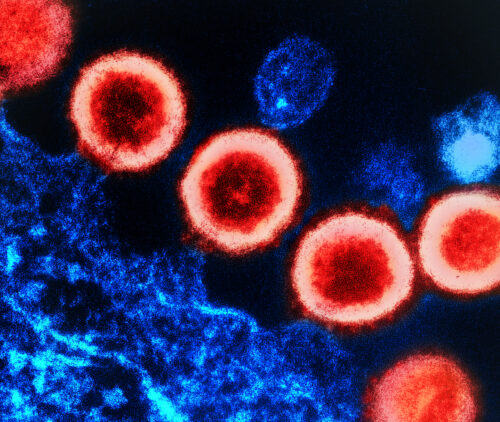Image courtesy of Flickr.
With a death toll of over forty million, the AIDS epidemic is among the most fatal in human history. Nearly the same number continue to live with the disease today, as a cure or vaccine has yet to be found. However, researchers are working to solve a mystery central to this battle: how the human immunodeficiency virus (HIV), the cause of AIDS, enters a cell’s nucleus.
HIV replicates by merging its DNA with its host’s DNA (housed in the nucleus) and then co-opting the host cell’s own biological machinery to produce viral proteins. Therefore, inhibiting its mechanisms of nuclear entry could prevent infection. The virus’s DNA must pass through the nuclear pore complex (NPC), a collection of over 400 proteins that act as the “gate” to the nucleus. Some scientists believe that the entire HIV capsid, a cone-shaped shell holding the genome, passes through intact. Somehow, the capsid tricks the proteins of the NPC, called nucleoporins, into letting it through.
A technology developed by Qi Shen, Chenxiang Lin, and Patrick Lusk, all researchers at Yale University, could help reveal a potential mechanism for this entry. Using “DNA origami,” where DNA’s capabilities to fold into well-defined structures is harnessed to create nanoscale objects, Shen built mimics of the NPC’s inner channel. These mimics, dubbed “NuPODs,” consist of nucleoporins bound to a ring of DNA scaffolding. The NuPOD platform allows for the targeted examination of a single type of nucleoporin while still allowing multiple proteins to act cooperatively in a nuclear pore-like environment.
In collaboration with Yong Xiong, a professor and HIV researcher at Yale, Shen employed the NuPODs to study how HIV capsids interacted with three nucleoporins: Nup358, Nup62, and Nup153. The team first designed mimic channels each with one type of nucleoporin and then investigated which ones capsids bound to. Capsids did not bind to Nup62 channels but bound strongly to Nup358 channels and especially to Nup153 channels. Next, they created NuPODs with multiple layers of nucleoporins ordered according to their organization in NPCs. They found that the capsid was able to insert deeper into channels when entering from the Nup358 side, as it would in a real channel, than when entering from the Nup153 side. Additionally, Nup62 hampered the ability of the capsid to enter the channel.
The team determined that capsid passage through the NPC was guided by the capsid’s affinity to different nucleoporins. “On the outside, affinity is weak: on the inside, affinity is tight… There’s a gradient that provides the driving force to drive the virus in,” Xiong said. Secondly, they concluded that nuclear entry of the capsid involves more than just Nup153, Nup358, and Nup62. With a model consisting of just these three, complete penetration of the NPC does not occur because of the barrier effects of Nup62. Other proteins likely help the capsid pass.
This project was the first application of the NuPOD platform towards modeling a viral system. It bridges a technological gap in a field that currently lacks methods to study interactions between the HIV capsid and the nuclear pore. Shen, Lin, and Xiong plan to incorporate other nucleoporins into their NuPODs to further examine HIV capsid entry into the nucleus. Additionally, they hope to use the NuPOD platform to investigate whether other viruses use a similar trick to bypass the nuclear gate. This technology has opened a gate of its own: the study of viral entry into the nucleus. Perhaps this new path can lead us in the right direction to develop an HIV treatment once and for all.

